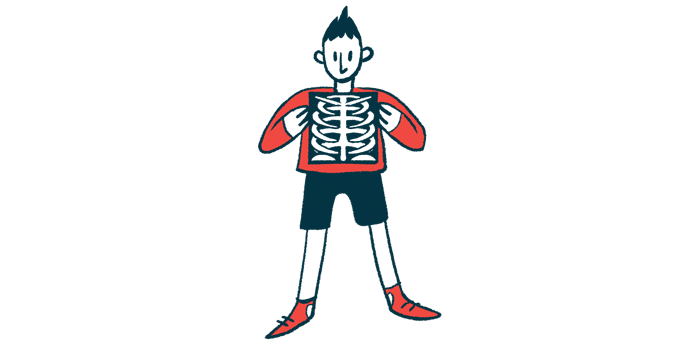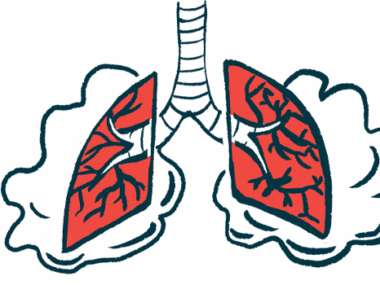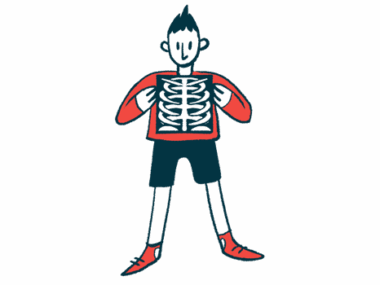Scoliosis, kyphosis common with SMA type 1 in DMT era: Study
Spinal abnormalities seen in 2020 in some 80% of 80 children using Spinraza
Written by |

While effective treatment is lengthening life and improving its quality, children with spinal muscular atrophy (SMA) type 1 often have abnormal spinal curvatures like scoliosis that require long-term care, a study highlights.
“Novel therapies have made this [SMA] a treatable condition, resulting in increased life expectancy,” the researchers, all in the U.K., wrote. “Survival and improved function mean spinal asymmetry is a new complication with limited data on its prevalence and severity and no current guidelines on management and treatment.”
The study, “Spinal presentations in children with type 1 spinal muscular atrophy on nusinersen treatment across the SMA-REACH UK network: a retrospective national observational study,” was published in BMJ Open.
Needs changing for people with severe SMA form on disease-modifying therapy
SMA type 1 is the most common form of SMA, characterized by symptoms that appear within the first few months of life. Historically, most children born with SMA type 1 have not lived beyond the first year or two of life — but new disease treatments have radically altered survival expectancy. Spinraza (nusinersen) was the first disease-modifying therapy to win widespread approval.
It’s common for SMA patients to develop abnormal spinal curves, such as scoliosis (when the spine curves sideways) or kyphosis (when the spine bends forward, leading to a “humpback” appearance). Interventions like bracing or surgery have historically been used to help manage these issues in patients with SMA types 2 or 3, which are generally milder than type 1.
Since survival historically has been poor in SMA type 1, children with this disease form seldom were treated for spinal issues. But in an era of disease-modifying treatments, that may change.
To get a better sense of the current situation, scientists reviewed data covering 80 children with SMA type 1 (age range, 4 months to 14 years) receiving care at a U.K. pediatric center between July and August 2020. All of the patients were being treated with Spinraza, the only widely available SMA treatment in the U.K. at the time the data were gathered. It was approved for use across the European Union in 2017, which then included the U.K.
Among 80 children in study, 17.5% had no abnormal spinal curvature
Results showed that unusual spinal curves were very common: 26 children had scoliosis alone, six had kyphosis alone, and 33 were diagnosed with both scoliosis and kyphosis. One other child with scoliosis had no data regarding kyphosis. Among this entire group, 14 children (17.5%) did not have any abnormal spinal curves.
The researchers noted that patients with scoliosis and/or kyphosis often had limited ability to move their necks.
“There is an association between spinal asymmetry and reduced neck range of movement, and it is therefore important that this is identified and monitored as part of spinal management,” they wrote.
Twenty-seven children were able to sit independently without any support, while 22 others could sit but required some form of assistance. Twenty-six were not able to sit at all, and the sitting ability of five children was not recorded during the study.
More than half were using a spinal brace to help manage an abnormal spinal curve. A handful of patients had undergone spinal surgeries.
“Scoliosis is a common feature and almost invariably requires surgery in the natural history of type 2 SMA, and it is not known if the scoliosis trajectory of treated type 1 SMA will be similar to or different from type 2 SMA,” the scientists wrote.
Researchers noted that it’s difficult to draw firm conclusions about care interventions, especially since their data didn’t detailed how a child’s spinal curvature progressed over time. Still, these data underscore that spinal curves are very common in SMA 1 patients using a disease-modifying treatment, and these spinal issues are often severe enough to necessitate medical intervention. As such, the researchers stressed a need for further work to figure out best practices in managing spine abnormalities in SMA type 1 patients on disease-modifying therapies.
“With an expected increased type 1 SMA population, early and ongoing assessment of these children is essential and consideration for the new presenting management challenges needs to be made,” the scientists concluded.







